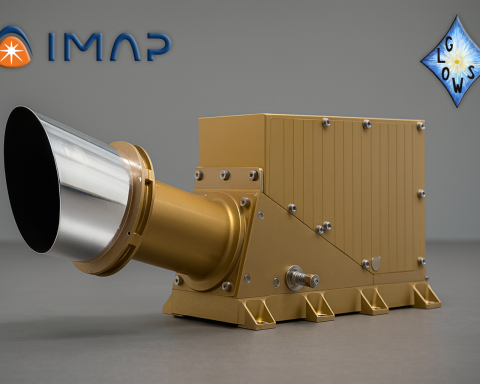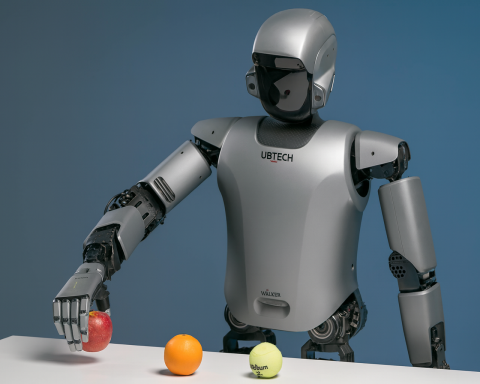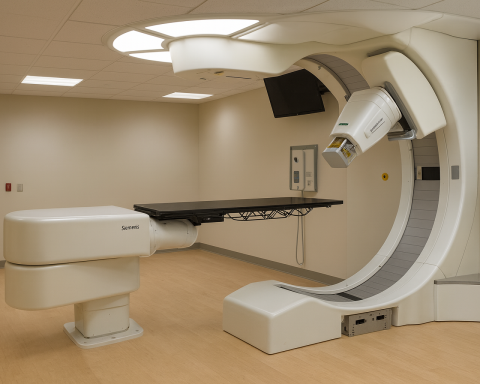- Open-source QML framework: PennyLane is a cross-platform Python library for quantum computing, quantum machine learning, and quantum chemistry github.com, built by Xanadu and the community.
- Differentiable quantum programming: It pioneers quantum differentiable programming, making hybrid quantum-classical computations automatically trainable github.com, docs.aws.amazon.com.
- Hybrid models: You can embed quantum circuits into classical ML models (e.g. PyTorch, TensorFlow, JAX) and compute gradients end-to-end for QNNs or VQE github.com, postquantum.com.
- Extensive integrations: PennyLane offers interfaces to NumPy, PyTorch, TensorFlow, JAX, and plugins for Qiskit, Cirq, Braket, etc., letting you run circuits with familiar ML tools docs.pennylane.ai, postquantum.com.
- Hardware-agnostic: It supports simulators and real quantum hardware: from IBM Q (via Qiskit) and AWS Braket (IonQ, Rigetti) to Xanadu’s photonic devices and AQT’s trapped-ion machines docs.aws.amazon.com, aqt.eu.
- Key use cases: Widely used for variational quantum algorithms (VQE for chemistry, QAOA for optimization), quantum neural networks (QNNs), quantum GANs, and other hybrid quantum ML tasks docs.pennylane.ai, postquantum.com.
- Industry adoption: Leading companies use PennyLane. For example, Menten AI uses PennyLane to design peptide-based drugs prnewswire.com, and Rolls-Royce (with Xanadu) is developing hybrid toolchains (the “Catalyst” project) to accelerate jet-engine simulations riverlane.com.
- Active research community: PennyLane appears in recent research (e.g. quantum circuit cutting, benchmarking QML models, quantum chemistry papers github.com) and powers tutorials and demos (image classification, transfer learning, chemistry simulations, etc.).
What Is PennyLane?
PennyLane is a Python framework developed by Xanadu for quantum machine learning and hybrid quantum-classical computing github.com, jcheminf.biomedcentral.com. It embodies a new paradigm of quantum differentiable programming: quantum circuits are treated as functions with tunable parameters, and PennyLane automatically computes gradients with respect to those parameters github.com, docs.aws.amazon.com. In practice, you define a QNode (a quantum circuit) and decorate it with @qml.qnode; PennyLane then builds the quantum circuit and connects it to your classical code, handling gradient backpropagation through the quantum device. The library was introduced in 2018 (arXiv:1811.04968) and has matured with a rich set of features. Its core design goal is hardware-agnostic, differentiable quantum programming – you can prototype on simulators and later switch to real hardware with minimal code changes github.com, postquantum.com.
PennyLane comes with modules for quantum circuits, operations (gates), measurements, and higher-level templates (pre-built ansatzes). Notably, it includes a qchem module for quantum chemistry: this provides a differentiable Hartree–Fock driver and tools to construct molecular Hamiltonians for algorithms like the Variational Quantum Eigensolver (VQE) docs.pennylane.ai. For example, one can create a molecule, build its qubit Hamiltonian, and then use a parametric circuit to find its ground-state energy – all within PennyLane’s framework.
PennyLane’s philosophy is “built by researchers, for research” github.com. It is open-source (Apache 2.0) and designed to be extensible: you can write your own devices or plugins if needed. The official documentation (docs.pennylane.ai) covers installation (pip install pennylane for Python 3.11+), tutorials, and a codebook of examples github.com, docs.pennylane.ai.
What You Can Do with PennyLane
PennyLane enables a wide range of quantum computing applications, especially those involving parameter optimization. Key capabilities include:
- Quantum circuit programming: Build and simulate arbitrary quantum circuits with various gate sets, state preparations, and measurements github.com. You can run them on built-in simulators (e.g. default.qubit, lightning.qubit) or on external devices via plugins. Advanced features like mid-circuit measurements, adaptive circuits, and error mitigation are supported github.com.
- Variational algorithms: Implement NISQ-era variational algorithms (VQE, QAOA, VQF, etc.) out-of-the-box. PennyLane automates gradient computation so that you can embed the circuit parameters in a classical optimizer loop. This is ideal for near-term tasks like chemistry simulations or optimization problems docs.pennylane.ai, postquantum.com.
- Quantum Machine Learning (QML): Integrate quantum circuits into ML pipelines. For instance, build a quantum neural network (QNN) by using a variational circuit as a feature map or model layer. PennyLane provides templates (e.g. strongly entangling layers, data encoding circuits) and functions to convert a QNode into a PyTorch nn.Module or TensorFlow layer. A typical use case: use a small quantum circuit to extract features from data, then feed them into a classical neural network, training the whole model end-to-end postquantum.com.
- Hybrid optimization: Combine classical computation and quantum execution seamlessly. PennyLane supports hybrid workflows where a classical processor orchestrates quantum circuit evaluations. Because it hooks into TensorFlow/PyTorch autograd, you can optimize hybrid models exactly as you would train a pure neural network – gradients flow through both quantum and classical parts postquantum.com, docs.pennylane.ai.
- Quantum chemistry simulations: Using the qml.qchem module, you can set up molecular problems (e.g. Hydrogen molecule) in a few lines and run VQE to find ground-state energies docs.pennylane.ai. This includes importing results from classical chemistry packages (OpenFermion, PySCF) into PennyLane for initialization or comparison.
- Quantum datasets and kernels: PennyLane offers tools and datasets (e.g. Strawberry Fields Photonic datasets) to speed QML research github.com. It also includes support for quantum kernels and classifiers for tasks like clustering or classification.
- Circuit visualization and analysis: You can draw circuits textually (qml.draw) or get a graphical circuit diagram. PennyLane also integrates with tools to inspect gradient paths, compile or transpile circuits, and simulate noise.
Overall, PennyLane is geared toward experimentation with trainable quantum circuits. It abstracts away many low-level details (no need to hand-code gradients or device APIs) so researchers can focus on algorithms and models postquantum.com, jcheminf.biomedcentral.com.
Use Cases & Examples
Quantum chemistry: A canonical example is computing molecular energies. PennyLane’s chemistry tools allow building a molecule’s Hamiltonian and running VQE. For instance, one can easily simulate H₂ or LiH molecules and optimize parameters to approximate the ground state. Publications leveraging PennyLane include accelerated quantum chemistry algorithms docs.pennylane.ai, github.com.
Quantum Neural Networks: PennyLane demos include quantum image recognition, classification, and transfer learning. For example, a hybrid MNIST digit classifier can be built where a quantum circuit encodes pixel data and a small quantum neural network is trained (often with a PyTorch or TF optimizer) to classify digits. The seamless gradient flow means the quantum circuit’s parameters update along with classical layers postquantum.com.
Quantum GANs and generative models: PennyLane has tutorials on building Quantum Generative Adversarial Networks (QGANs) to model data distributions. A generator and discriminator can both be quantum circuits whose parameters are updated via backpropagation pennylane.ai.
Optimization (QAOA/QUBO): For combinatorial problems (MaxCut, portfolio optimization, etc.), PennyLane lets you set up the QAOA ansatz and optimize its parameters classically. The hybrid loop handles the cost-function evaluation and gradient-based updates.
Domain-specific tasks: Researchers have applied PennyLane to tasks like drug design (generating bioactive peptides), finance (portfolio risk), and even natural language processing with quantum circuits. Any problem that can be formulated as optimizing a parameterized circuit can leverage PennyLane’s framework.
Integration with Other Tools
A major strength of PennyLane is its interoperability with popular software:
- Machine Learning Libraries: Interfaces to TensorFlow, PyTorch, JAX, and NumPy mean you can treat quantum circuits as layers or functions in these libraries docs.pennylane.aipostquantum.com. PennyLane makes the quantum output a compatible tensor, so built-in optimizers (Adam, SGD, etc.) can be used. There are helper classes like qml.qnn.TorchLayer to wrap a quantum circuit as a torch.nn.Module.
- Classical-quantum plugins: PennyLane provides plugins that integrate other quantum frameworks. Notably:
- PennyLane-Qiskit: Lets you run PennyLane circuits on IBM hardware. You can specify devices like “qiskit.basicsim” or “qiskit.remote” (for IBM’s cloud) when creating a qml.device, and even convert existing Qiskit QuantumCircuit objects into PennyLane circuits pennylane.aipennylane.ai. (Example: the demo shows converting a simple Qiskit circuit to PennyLane code and executing it with @qml.qnode pennylane.aipennylane.ai.)
- PennyLane-Cirq: Integrates Google’s Cirq framework, allowing access to Cirq’s simulators and devices from PennyLane. Cirq-based circuits can be drawn or run through PennyLane’s API.
- PennyLane-Braket: Through Amazon Braket’s PennyLane plugin, you can run circuits on AWS quantum devices (IonQ, Rigetti, OQC) using the “braket.aws.qubit” device, or use Amazon’s high-performance simulators (SV1) docs.aws.amazon.com.
- PennyLane-StrawberryFields (SF): Xanadu’s own plugin for photonic quantum computing. This lets PennyLane run continuous-variable photonic circuits on Xanadu hardware (like the X8 device) pennylane.ai.
- Other plugins: There are plugins for Rigetti’s Forest, Microsoft’s QDK, AQT, etc., enabling backend flexibility. For example, support for AQT’s ion-trap machines was announced in 2020 aqt.eu.
- Quantum Chemistry Libraries: PennyLane integrates with OpenFermion and PySCF for generating molecular Hamiltonians, as alternatives within the qml.qchem module docs.pennylane.ai.
By combining these integrations, PennyLane acts as a “wrapper” enabling one API to target many platforms. You can prototype an algorithm once, and then switch devices by changing a single line (e.g. qml.device(“device_name”, …)). This hardware-agnostic design is lauded: one review notes that PennyLane “future-proofs your code” since you can later run it on a new device by simply installing the appropriate plugin postquantum.com.
Supported Hardware Platforms
PennyLane is designed to run on all major quantum hardware (via plugins) as well as fast simulators. Supported platforms include:
- IBM Quantum (Qiskit): Real QPU and simulators. The PennyLane-Qiskit plugin provides device shortcuts (e.g. “qiskit.basicsim” for the Qiskit basic simulator, and “qiskit.remote” for any IBM backend) pennylane.aipennylane.ai.
- AWS Braket: Through the Amazon Braket plugin, PennyLane can target Braket’s local and cloud resources docs.aws.amazon.com. Device ARNs for IonQ, Rigetti, or D-Wave can be specified. PennyLane also pre-installs on Braket notebooks for hybrid jobs.
- Xanadu Photonic Hardware: Via the Strawberry Fields plugin, PennyLane can access Xanadu’s photonic devices (e.g. the X8 Gaussian Boson Sampling chip) and simulators pennylane.ai. For example, PennyLane code can run on a Xanadu backend by creating a device ‘strawberryfields.remote’ with the desired backend (e.g. “X8”, “simulon_gaussian”).
Figure: A Xanadu photonic quantum processor (the X8 Gaussian Boson Sampling device) accessible via PennyLane’s Strawberry Fields plugin pennylane.ai. PennyLane can execute continuous-variable (photonic) quantum circuits on such hardware. - AQT (Alpine Quantum Technologies): PennyLane announced support for AQT’s trapped-ion hardware aqt.eu. Xanadu’s Head of Software Nathan Killoran noted: “PennyLane supports a wide range of quantum hardware and ML libraries and we are pleased to add AQT’s quantum computers to the ecosystem” aqt.eu.
- Google Cirq: While Google’s own hardware (Sycamore) is accessible via Cirq/PennyLane, PennyLane primarily uses Cirq for simulations (the Cirq plugin) and can run on Google Quantum Engine if hooked to a plugin.
- Rigetti and IonQ: These are accessible through AWS Braket or possibly via direct plugins as they become available.
- Simulators: PennyLane has optimized simulators (e.g. Lightning GPU via NVIDIA cuQuantum). Amazon Braket even embeds PennyLane’s GPU simulator for hybrid jobs docs.aws.amazon.com.
Because PennyLane can load any device by name (e.g. qml.device(“default.qubit”), qml.device(“ionq.qpu”), etc.), it effectively covers IBM Q, AWS (IonQ, Rigetti), Xanadu, AQT, and more. This broad hardware support is a key advantage for developers who want to test on many backends.
Industry and Academic Adoption
PennyLane has gained traction in both academia and industry. Some notable examples:
- Menten AI (Biotech): Menten AI uses PennyLane for protein and peptide design. As their press release explains, PennyLane “offers convenient integration of scientific computing and machine learning libraries with access to quantum simulators and NISQ devices”, enabling rapid prototyping of hybrid models for drug discovery prnewswire.com. They highlight that PennyLane lets them focus on designing peptides rather than on low-level integration. Senior scientist Ian MacCormack said, “NISQ era quantum advantage will require intelligent use of quantum and classical computing in tandem, and PennyLane moves us a step in that direction.” prnewswire.com. This shows a real-world biotech application using PennyLane.
- Xanadu–Rolls-Royce–Riverlane “Catalyst” Project: Xanadu is collaborating with Rolls-Royce and Riverlane to create quantum toolchains for aerospace simulation. Xanadu’s Josh Izaac notes that this effort will guide development of Catalyst, “our just-in-time quantum compilation framework”, enabling exploration of larger, more complex algorithms with PennyLane riverlane.com. This is an example of a leading industrial R&D project building on PennyLane’s stack.
- AQT Partnership: In 2020, PennyLane announced support for AQT’s ion-trap QPUs. AQT’s CEO emphasized that combining Xanadu’s software with AQT’s hardware “will significantly facilitate user- and application-driven progress” in fields from chemistry to ML aqt.eu.
- Academic Research: PennyLane is referenced in recent quantum computing literature. For example, it is used in work on quantum circuit cutting github.com and benchmarking QML models github.com. A 2025 review paper contrasts PennyLane with Qiskit, noting that “PennyLane excels in research applications due to its flexibility to adjust parameters in detail and access multiple sources of real quantum devices” jcheminf.biomedcentral.com. It also highlights PennyLane’s focus on interfacing quantum devices with ML frameworks like TensorFlow and PyTorch jcheminf.biomedcentral.com.
Many universities and labs use PennyLane for teaching and prototyping. The PennyLane website hosts numerous demos and tutorials (e.g. on quantum chemistry, image classification, quantum finance models) contributed by both Xanadu and the user community. The active PennyLane Discussion Forum and GitHub repo (2.8k stars) further indicate a strong academic engagement.
Expert Commentary
Xanadu developers and users often praise PennyLane’s approach. For example, Ian MacCormack of Menten AI said:
“Xanadu’s PennyLane platform offers a convenient integration of scientific computing and ML libraries with access to commercially available quantum simulators and NISQ devices… NISQ era quantum advantage will require intelligent use of quantum and classical computing in tandem, and PennyLane moves us a step in that direction.” prnewswire.com
Juan Miguel Arrazola (Xanadu’s Head of Algorithms) noted PennyLane’s community and goals:
“One of the central goals for PennyLane is to provide its users with all the tools necessary to develop and implement new quantum algorithms. Menten AI’s decision to build their solutions on top of PennyLane is a testament of the success of this goal.” prnewswire.com
These quotes underscore PennyLane’s emphasis on enabling hybrid algorithm development and community growth. Xanadu’s team emphasizes that PennyLane’s differentiable programming model is user-friendly and “seamlessly integrates classical ML libraries with quantum hardware and simulators, allowing users to train quantum computers in the same way as neural networks” prnewswire.com.
Further Resources
- Official docs: PennyLane’s documentation (docs.pennylane.ai) provides guides on installation, tutorials, API references, and example workflows docs.pennylane.ai. The Quickstart and codebook are excellent places to begin.
- Demos & Tutorials: The PennyLane website hosts a gallery of demos (e.g. demos on quantum chemistry, QNNs, error mitigation) and blog how-tos (like the ones cited above) that walk through real examples.
- GitHub: The PennyLane source code and issue tracker are at github.com/PennyLaneAI/pennylane (see README description github.com).
- Community: The PennyLane forum and Slack groups provide help and community projects.
By bridging quantum hardware and ML tools, PennyLane has become a go-to framework for experimenting at the frontier of quantum machine learning and hybrid algorithms, as documented in its website and numerous tutorials github.com, docs.pennylane.ai.
Sources: Official PennyLane documentation and repository github.com, docs.pennylane.ai; Xanadu/PennyLane blog posts and press releases pennylane.airiverlane.com, prnewswire.com, aqt.eu; industry and academic news prnewswire.com, jcheminf.biomedcentral.com.












